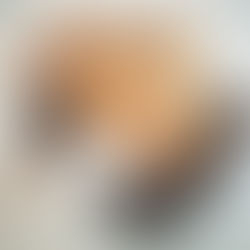Effective Teaching Statement
"Creativity takes courage" - Henri Matisse
Each year students are asked to neatly and eloquently explain their idea of what effective teaching should look like. The following is my effective teaching statement that I wrote after my fourth year as a pre-service teacher. It embodies everything that I believe in.

As a teacher, I aim to extend knowledge and inspire discoveries. More specifically, as a specialist in the Arts, I introduce students to a diversity of works and ask them to articulate their reactions. To this end, I seek a balance between lecturing and exploring. Teaching depends upon the passing of the necessary tools to allow for the creative process of discovery and inquiry to begin.
Assessment is an intricate act between knowledge and improvement. I am conscious of student’s backgrounds and goals, my lessons and assessments aim to connect student’s lives personally to the material. Students are expected to master a body of knowledge necessary to allow for appropriate exploration within the Arts. Through exams, worksheets, research and discussion students become more familiar with artists, terms and concepts. Additionally, students are given the chance to explore and reflect on the material through interacting and creating their own works of art whether musically, dramatically or visually. I have high expectations, however, my assessment is not based on performance of a dance, drama, or drawing; rather it is the improvement and inclusion and execution of concepts and skills that have been acquired in class.
I believe in a balanced manner of instruction, whether it is collaborative or individual or lecture and inquiry. I am aware of student’s differences emotionally and mentally, therefore, dependant on the student, activity and expectations, adaptations are necessary in hopes of developing student’s strengths while accommodating weaknesses. Through the Arts I invite students into the larger world around them. I strongly believe that all students have the ability to explore and articulate their reactions to the Arts. In lectures, students are given the historical and cultural information necessary to understanding a piece of music, art or drama. While, during discussions and assignments students have the ability to inquire deeply about avenues of interest. Finally, through exploration, students are given the opportunity and freedom to push beyond their own experiences and expand their skills and understanding.
Students interpret and grasp concepts differently. Therefore, lectures and lessons are created to facilitate discussions, research and reflection to grant the students the opportunity to form meaningful connections that extend beyond the classroom. This is a crucial element in my class as students lead the direction of discussion allowing for me to tailor lessons and skills that are applicable to the subject but also to the students. Furthermore, the most important aspect of my classroom is exploration and creation. Students need time to discover and attempt the skills and avenues of the Arts. Students need to be given time to create significance but also to create works of Art that are sincere and expressive, which can only be done alone. These elements can only transpire in an environment that is safe and conducive to learning in this manner. By including works of Arts created by students, establishing a respectful and inclusive environment helps eliminate the fears of students who have not yet experienced the affects and vulnerability of the Arts.

The beauty of the Arts is its applicability to all other disciplines and domains. Through exploration I hope that they find a sense of curiosity and thirst for knowledge. Having a balance for students gives them tools and freedom to discuss, explore, and create with an awareness of its cultural and humanistic significance. Allowing them the opportunity to learn a different language that transcends through time and space.





















